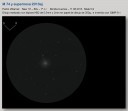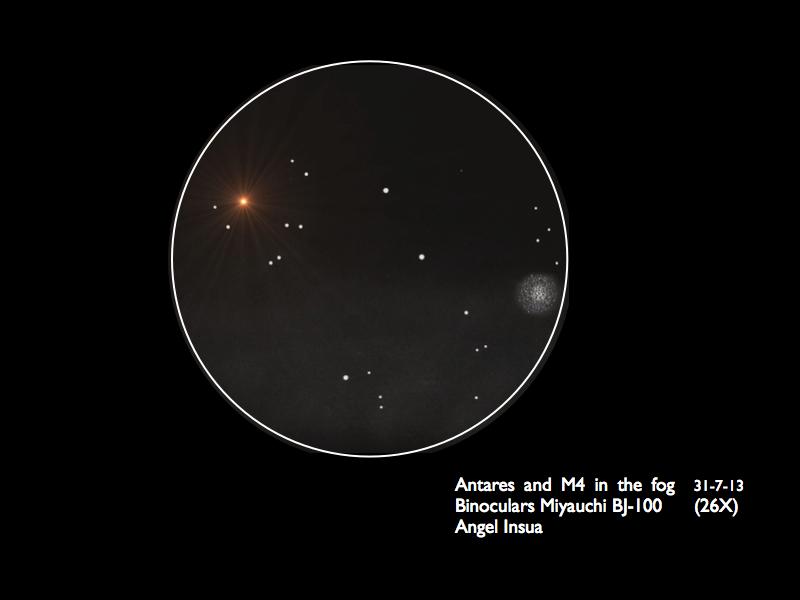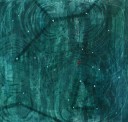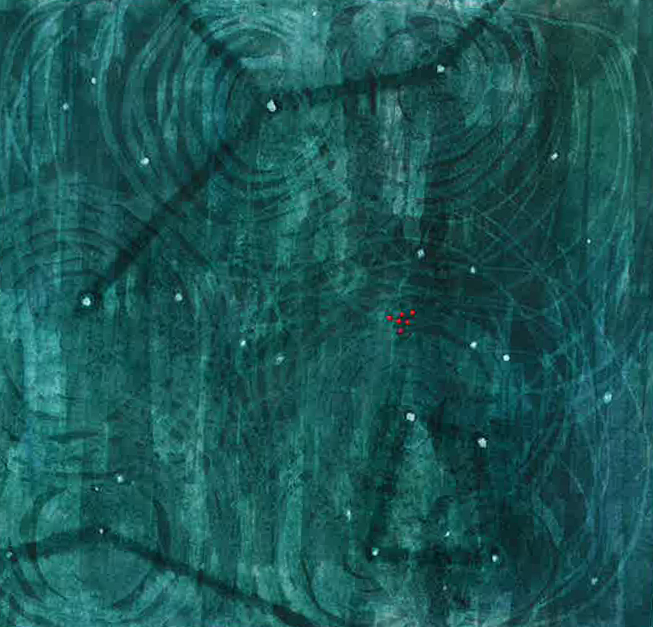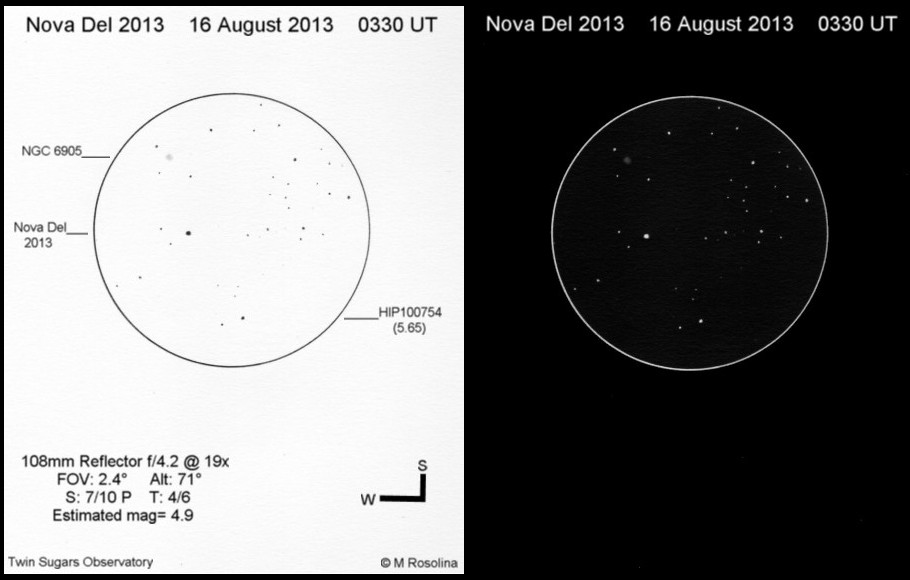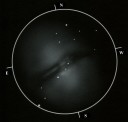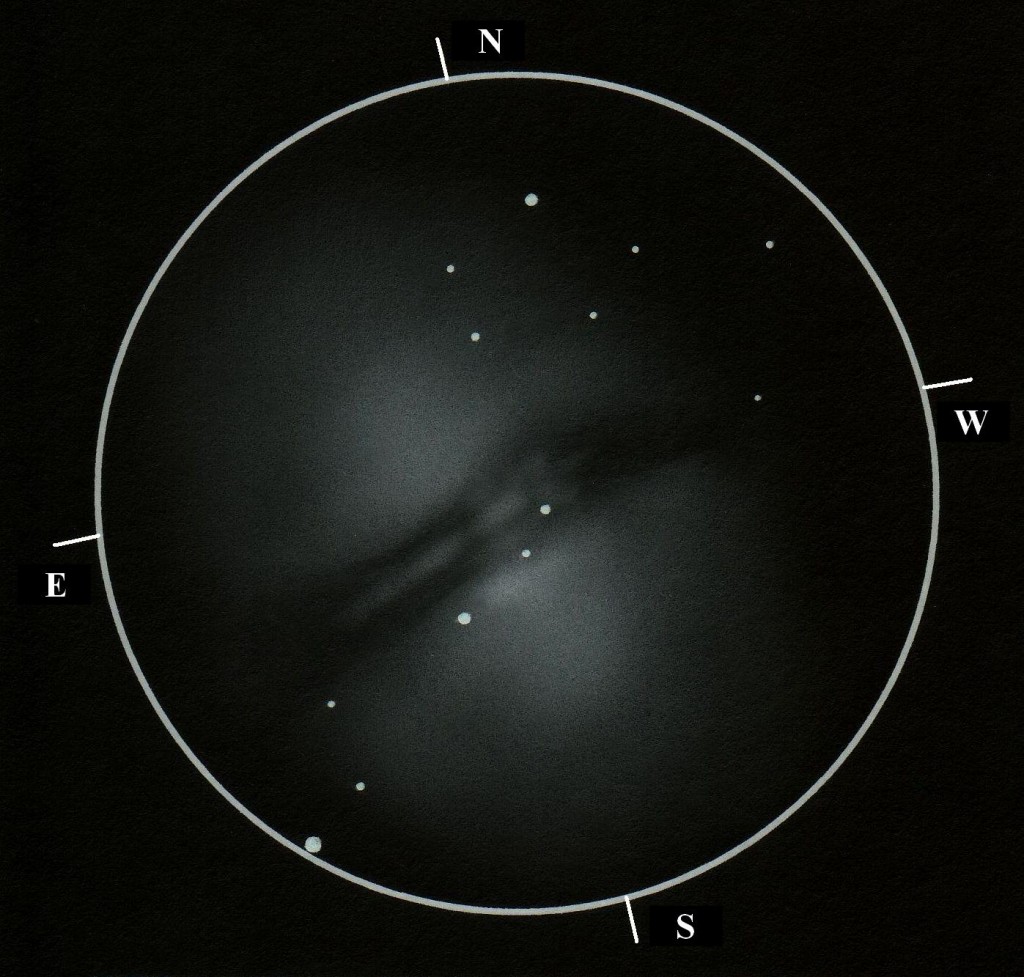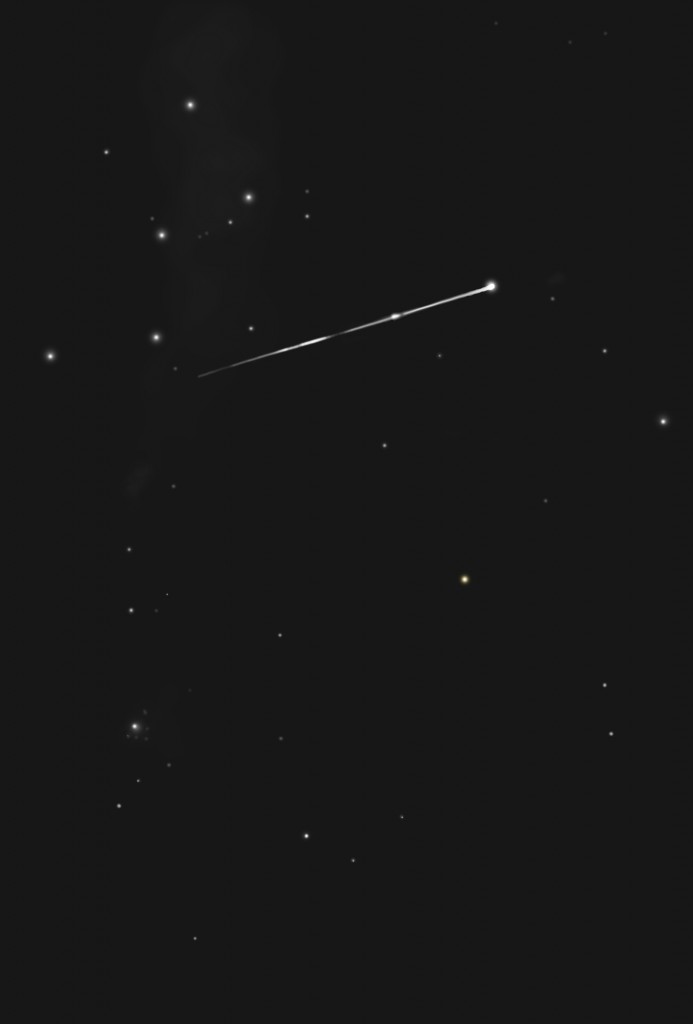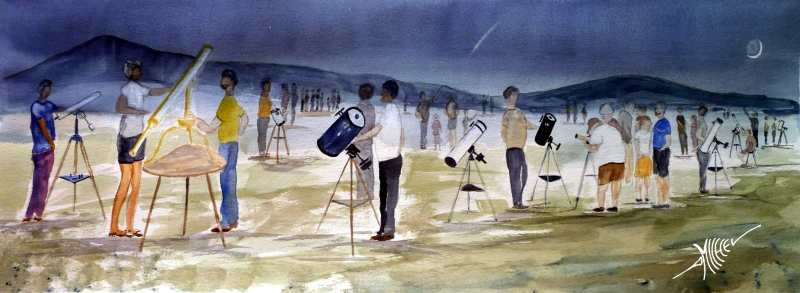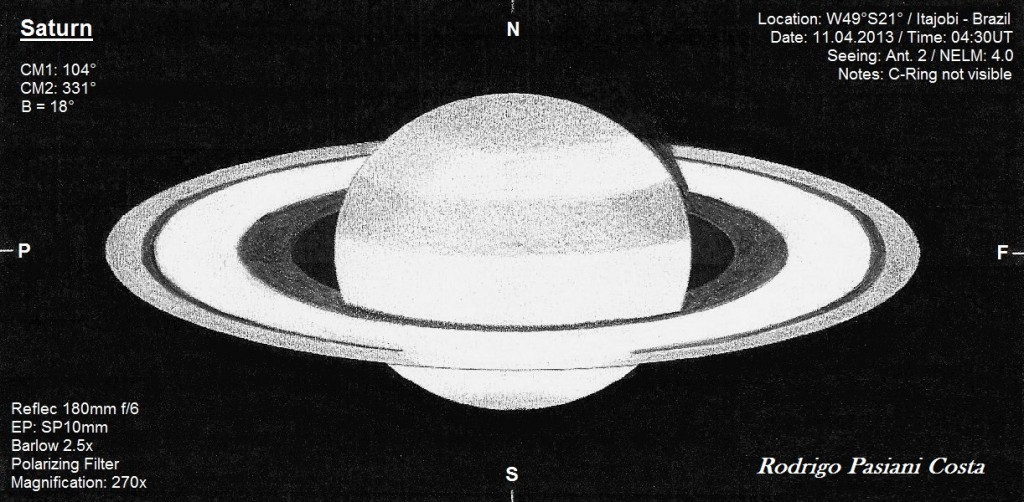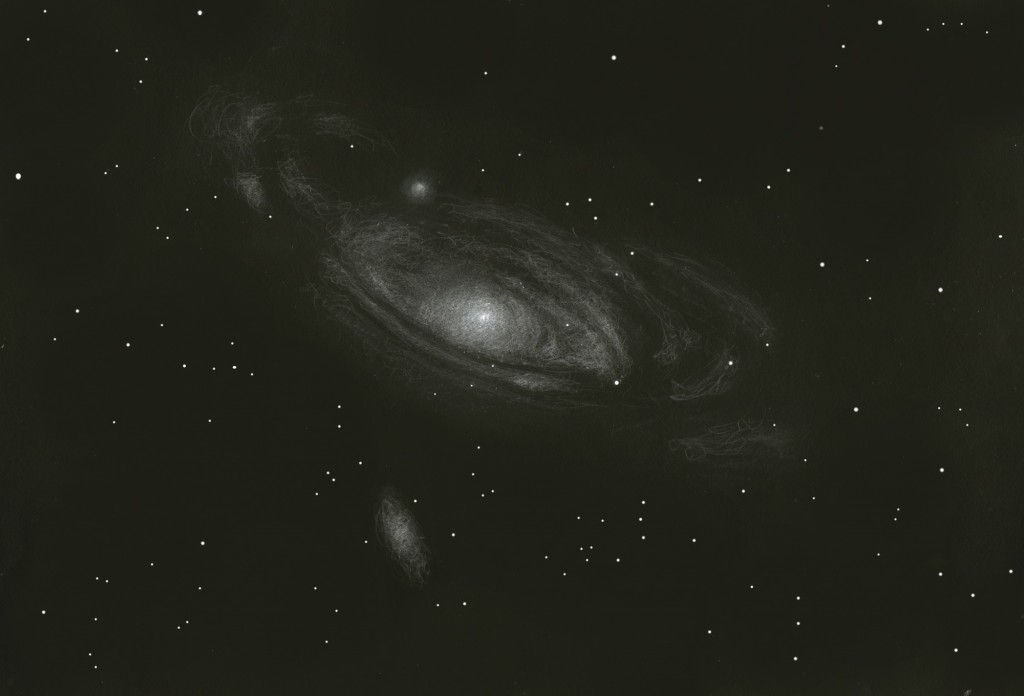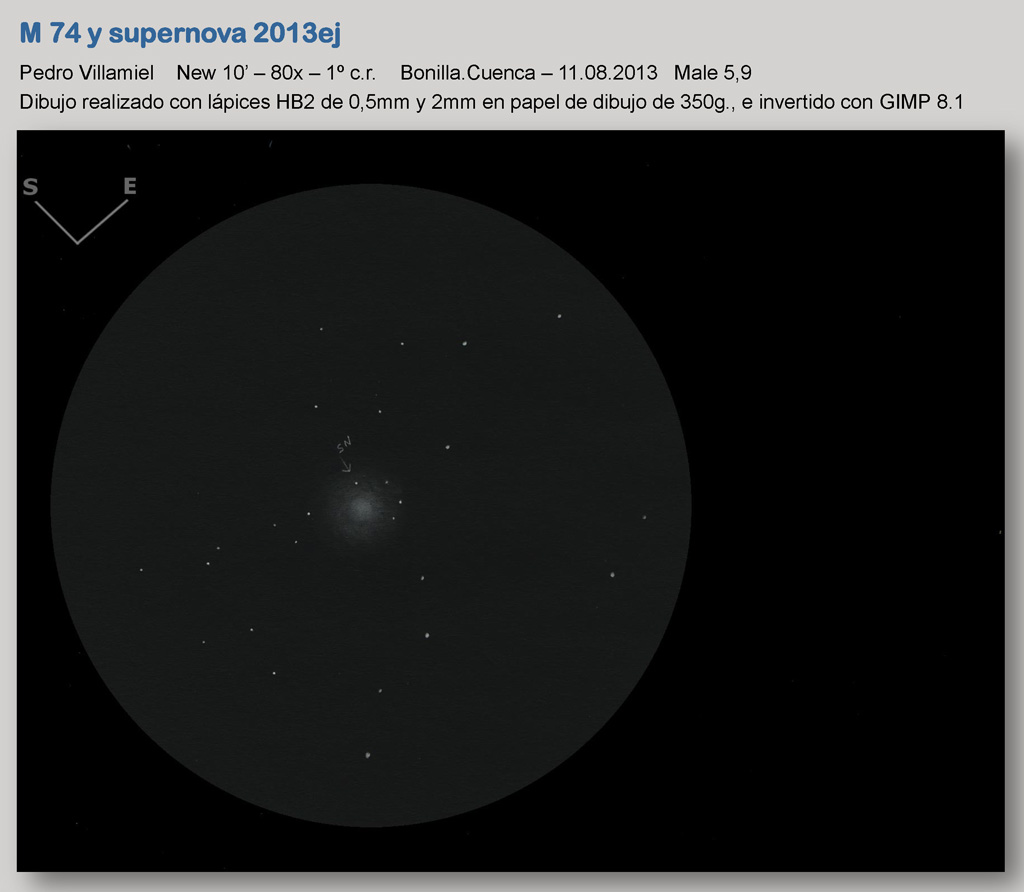
• Object Name: M 74 and NS 2013ej
• Object Type: Face-on spiral galaxy with a supernova
• Location: Bonilla-Cuenca Spain
• Date: August, 11th, 2013
• Media: Graphite Pencil HB 2, torchon 1 and 130g drawing sheet
• inverted colors with GIMP 2.8
Observation notes:
The supernova is shown as a little star in the middle of the southern disk of the galaxy. Of the five stars, I meet in front of M 74, the supernova is closest to its center.
Its brightness is very similar to the nearest star to the west and also to the middle star of the three that are on the eastern edge of the disc (picture below).
Greetings to all visitors of this page.
